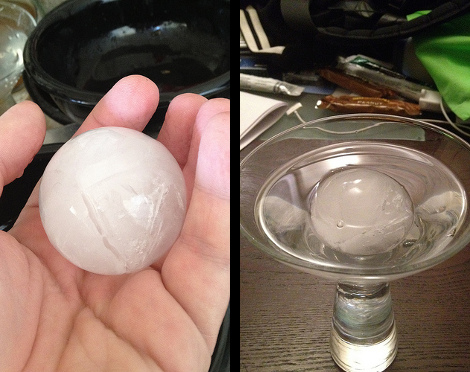
On November 23rd last year, [Dhairya] attended a little shindig at MIT. Three drinks into the night, he blacked out and woke up in the hospital the next day. It was an alcohol-induced blackout, and like all parties at MIT, there’s an ingenious solution to [Dhairya]’s problem.
[Dhairya] came up with an alcohol-aware ice cube made of a coin cell battery, an ATtiny microcontroller, and an IR transceiver are molded into an edible gelatin ice cube. The microcontroller counts the number of sips per drink, and after one glass of adult beverage changes the color of the flashing LED from green to yellow. After two drinks the LED changes from yellow to red, signaling [Dhairya] to slow down.
If [Dhairya] feels the night is too young and keeps on drinking, the IR transmitter signals to his cell phone to send a text to a friend telling them to go take [Dhairya] home.
Less than three weeks after waking up in the hospital, [Dhairya] tested out his glowing ice cubes at another party. Everything performed wonderfully, even if he admits his creation is a little crude. A neat piece of work, and we can’t wait to see an update to this project.
Continue reading “LED Ice Cubes Prevent Alcohol Induced Blackouts”












